Untitled
SOGNANDO CON JAMES GRIFFIN – DREAMING WITH JAMES GRIFFIN

I never bought a book only for its cover, however I always appreciated its charm, specially when it reflects the plot. I like to image the characters' faces, so I always look at the cover and read the story at the same time. So, tell me - how many times have you dreamed while looking the romance cover? How many times have you hoped to be the woman on the romance cover? Me, a lot of times! But beyond the dreams there is more that captures my interest. I always asked myself how these small artworks can be composed, and who are their creators? For these reasons today I have the pleasure to introduce you the right person about the “covers world”: James Griffin, artist and illustrator.
“Un uomo e una donna travolti da una tempesta di passione… un paesaggio dal sapore antico… uno sguardo… un bacio…”
Non ho mai acquistato un libro unicamente per la copertina, tuttavia ho sempre subito il loro fascino, soprattutto quando rispecchiano la storia. Mi piace dare un volto ai personaggi e inevitabilmente mi ritrovo col fare la spola tra pagine e copertina. E a voi, quante volte vi è capitato di sognare su una cover di un romanzo? Quante volte avete desiderato essere al posto di quella donna in prima pagina? Oh, io davvero tante! Ma, al di là dell’immagine c’è altro che suscita il mio interesse. Mi sono chiesta spesso come vengono realizzate queste piccole opere d’arte e chi sono i loro creatori. Ed è per queste ragioni che oggi ho il piacere di presentarvi qualcuno che di cover se ne intende decisamente tanto: l’artista ed illustratore James Griffin.
James will stop by and read your comments in the coming days – so please, don’t forget to sign them with your name or a nick.
James passerà nei prossimi giorni a leggere i commenti che le lascerete – per favore ricordatevi quindi di firmarli con il vostro nome, oppure una sigla o un nick.
INTERVIEW - INTERVISTA
Hi James, welcome on our blog. As many readers don’t know you please let us know something about you.
I was born in Canada in 1949, to a family with a father who had ambitions to travel and see the world. My mother had talent in drawing and my father had strong musical talents, but neither pursued those seriously when they started to have a kids. As I grew up we started moving, - first to the USA, then to Lima Peru, where my father set up and managed a tire factory. I showed artistic abilities early on and, in a family of four boys and one girl, making art was both an escape and a way of standing out in that crowd. We moved back to mid-western USA for some time and then to London when I was 11. That great city, with its fantastic Art museums and galleries showing the latest work, really turned me on to being an artist. I also went to Paris and soaked up as much as I could of the art there. I was only in my early teens, but I felt I was a serious artist. Our next move, to Sao Paulo, Brazil, allowed me to explore more vibrant colors and a freer sensibility in my painting. I finished high school there. I chose Pratt Institute in Brooklyn, NY, when it came time for college, both for the reputation of the school and the culture, high and low, of New York. That was a tumultuous time, with the Vietnam War, Hippie counterculture and a general questioning of everything going on and I dived right in. Even as I experimented with every kind of abstract art, I kept returning to realism. That genre was not in favor at the time and was considered old-fashioned. But painting with a basis in realism was what interested me. Galleries weren’t interested, but publishers were. In 1976 I started doing illustrations for whoever would hire me. It was around that time when Charles Gehm, an experienced illustrator, introduced me to the business of book cover illustrations. He took me to a shoot, and had me work on some of his illustrations, as learning exercises. I have been going non-stop ever since and have been very grateful to him.
Ciao James, benvenuto nel nostro blog. Dato che molte lettrici non ti conoscono raccontaci qualcosa di te.
Ciao Veronica e buongiorno a tutti. Prima di iniziare permettimi di ringraziare sia tu che l’intero staff di Isn’t it romantic per avermi ospitato. E’ la mia prima intervista italiana! Iniziamo… Sono nato in Canada nel 1949, in una famiglia con un padre che aveva l’ambizione di viaggiare e vedere il mondo. Mia madre aveva talento nel disegno e mio padre aveva un forte talento musicale. Due grandi passioni che però non hanno potuto seguire seriamente quando hanno iniziato ad avere dei bambini (ho ben 4 fratelli e una sorella!). Ho vissuto la mia infanzia negli Stati Uniti, poi ci siamo trasferiti a Lima in Perù, dove mio padre ha istituito e gestito una fabbrica di pneumatici. Fin da piccolo ho mostrato interesse per l’arte e, in una famiglia così numerosa, dedicarmi al disegno è stato un modo per sottrarmi a quella confusione. All’età di 11 anni tornammo in America ma non per molto, poco dopo infatti ci trasferimmo a Londra, città che ho particolarmente amato. Ed è stato proprio a Londra, tra musei e gallerie d'arte fantastica, che mi portò verso la starda dell’artista. Sono andato anche a Parigi e ho cercato di assorbire il sapore dell’arte francese. Ero solo nella mia adolescenza, ma mi sentivo un artista serio e sapevo che sarebbe stato il mio lavoro. Poi ci trasferimmo nuovamente, questa volta a San Paulo in Brasile dove ho finito il liceo e dove ho potuto esplorare un’arte dai colori vivaci dalla quale ho colto una sensibilità più libera per la mia pittura. Quando è arrivato il momento dell'università ho scelto il Pratt Institute di Brooklyn, NY, sia per la reputazione della scuola e della cultura. Era un periodo tumultuoso: la guerra del Vietnam, l’epoca hippie e in queste discussioni generali mi ci tuffai dentro Anche se ho sperimentato ogni tipo di arte astratta, ho continuato a tornare al realismo. Quel genere non era favorevole al tempo ed era considerato fuori moda. Ma la pittura a base di realismo era quello che mi interessava di più. Nel 1976 ho iniziato a fare le illustrazioni per chiunque mi volesse. Fu in quel momento che Carlo Gehm, un famoso illustratore, mi ha introdotto nell'attività di illustrazioni per le copertina dei libri. Mi ha fatto decollare, facendomi lavorare su alcune delle sue illustrazioni, come esercizi di apprendimento. Da allora non mi sono mai fermato e gli sono stato molto riconoscente.

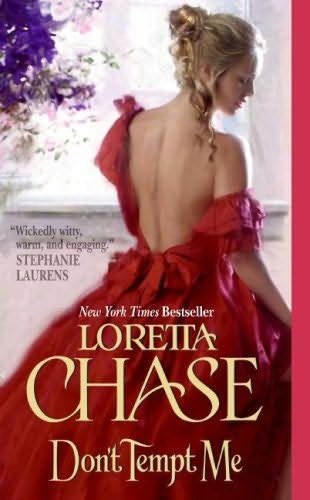
Ok James, let’s start with the questions.
How did you get started in art?
I was very interested in drawing and coloring as soon as I could hold a pencil. My mother encouraged me, showing me art books. The family still has a book that I grew up with, The Art treasures of the Louvre, with many pages defaced by crayon scribbles. I always found it fun and pleasing to create things. When we moved to London, I had the wonderful experience of seeing and touching, (they weren’t watching so much back then!), great paintings by the masters. But also, during my time there, I went to a major show of Pop art, with truly revolutionary painters like Johns, Rosenquist, Rauschenberg and Warhol. It was mind-blowing, to use a phrase from that era. I wanted to do all that myself. I wanted to mix it all up, the classical masterpieces with the brash Pop art. That is still a goal in my own gallery art, to somehow blend our current reality with the art history I carry around in my head.
Bene James direi che ora possiamo iniziare con le domande.
Com'è cominciata la tua carriera di artista?
Fin dal momento in cui sono riuscito a tenere una matita in mano, ho avuto molto interesse per il disegnare e il colorare. Mia madre mi incoraggiava, mostrandomi dei libri d’arte. La mia famiglia ha ancora un libro con cui sono diventato grande, “I Tesori Artistici del Louvre”, con molte pagine rovinate da scarabocchi fatti coi pastelli colorati. Ho sempre trovato divertente e piacevole creare delle cose. Quando ci trasferimmo a Londra, ebbi la meravigliosa esperienza di vedere e toccare, (a quei tempi non stavano così attenti come oggi!), i grandi dipinti dei maestri. Ma durante il tempo che passammo lì, andai anche ad una grande esposizione di Pop Art, con pittori davvero rivoluzionari quali Johns, Rosenquist, Rauschenberg e Warhol. Fu una cosa da sballo, per usare un’espressione del’epoca. Avrei voluto fare anch’io tutte quelle cose. Volevo mescolare tutto, i capolavori classici con la sfacciataggine della Pop Art. E’ ancora un obiettivo della mia galleria d’arte personale, mescolare in qualche modo la nostra realtà corrente con la storia dell’arte che custodisco nella mia mente.
How does an illustration begin? (Research, collaborations with photographers, etc.)
When I receive an assignment to create a book cover, it is in the form of a small paragraph in an email with the character’s hair colour, a brief description of the period, setting and a word or two about the concept. I have to read a lot between the lines. Sometimes the art director will send me a rough sketch that shows a figure or couple and where the type will go, or a suggested pose. I draw quick pencil sketches to work out the rough ideas. Then, I’ll do research into the settings and other things I might include in the picture, like a horse carriage. I like to be accurate to the period, so I need to know for instance, what a gentleman’s carriage might look like in 1815. I’ve been doing historical costumes for so long, that I know what the look was for any particular era, but it always helps to refresh the memory. I have a huge picture collection, now mostly in digital form. This was something I learned early on, to collect and organize a picture file, the more extensive, the better. Next, I’ll set up a shoot at my favourite studio in New York, Shirley Green’s. I choose models, from an ever-changing group of models that are able to act as well as look good. I also order costumes from a costumer who is an artist herself, Sharon Spiak. I always do a detailed sketch, showing the overall look of the image, lighting and directions for acting. The more prepared I am, the better. I usually send the sketch to the art directors, so they can make comments. The publishers will only pay for only an hour shoot and that means setting up lights, getting the costumes on, fixing the hair and building rudimentary structures like “beds” or “benches”, if needed. When we’re finally ready to shoot, almost half the time is gone. We all swing into action, fans on, photographer shooting, me directing, the assistant watching the computer screen for focus and lighting problems. I’m usually rushing around, looking from the models and the sketch to the screen, trying to get everyone to catch that special moment of emotion, grace and beauty. Sometimes we finish before the hour is done! That is an indication of how intense the concentration is. When I get the images back in my studio, the work of sorting out the best shots begins. More often than not, I have to use parts of several images to get what I’m after. And then the intricate process of creating the final cover begins. My technique is kind of a mixture of cutting and pasting, drawing and painting. Because I’m a painter, everything I do in the image is to help it look like a painting. Why not actually paint it, you ask? Since the computer came on the scene, no one has the time and patience needed to have these illustrations done in oils, the way I used to. They were painted on canvas glued to wood and took a few weeks to paint. They were shipped, often while the paint was still drying, to the publisher by express mail. Any changes required sending it to me, waiting while I fixed it and then shipping it back. Now, when a piece is done, it is uploaded to the publisher immediately. Changes are faster, so there seem to be more of them! Also, the image is ready for them to use. No photography is needed. The whole process has been vastly speeded up. I still love to paint and do work in oils for my gallery work, but there is something so versatile about the computer. You can do almost anything with it, especially if you mix new with old. For instance, I design my gallery work on the computer and then paint it the traditional way.
Come nasce un 'illustrazione? (Ricerca, collaborazioni con fotografi, ecc...)
L’incarico di creare la copertina di un libro mi arriva sotto forma di un paragrafetto in un’email, che dice il colore dei capelli dei personaggi, una breve descrizione del periodo storico, l’ambientazione e una o due parole sull’idea di massima. Devo leggere un sacco di cose tra le righe. A volte il direttore artistico mi manda un schizzo che mostra una figura, oppure una coppia, e dove andrà messa la scritta, oppure che suggerisce una posa. Disegno dei veloci bozzetti a matita per mettere giù l’idea di base. Poi, faccio delle ricerche sull’ambientazione e su altre cose che potrei inserire nel dipinto, come ad es una carrozza con cavalli. Mi piace essere accurato per quanto riguarda il periodo storico, quindi, per esempio, devo sapere che aspetto poteva avere la carrozza di un gentiluomo nel 1815. Disegno costumi storici da così tanto tempo, che conosco il loro aspetto per qualsiasi epoca, ma rinfrescare la memoria serve sempre. Ho un’enorme collezione di dipinti, ora soprattutto in forma digitale. Questo è un accorgimento che ho imparato presto, cioè il fatto di raccogliere ed organizzare i dipinti sotto forma di files – più estesa è la raccolta, meglio è. Dopo, organizzo una seduta fotografica al mio studio preferito di New York, quello di Shirley Green. Scelgo i modelli, da un gruppo di modelli che cambia in continuazione e che possono continuare a posare fin tanto che hanno un bell’aspetto. Ordino anche i costumi da un costumista che è lui stesso un artista, Sharon Spiak. Faccio sempre uno schizzo dettagliato, che mostra l’aspetto complessivo dell’immagine, l’illuminazione e le indicazioni per le pose. Più sono preparato, meglio è. Di solito mando lo schizzo ai direttori artistici, così che possano fare i loro commenti. Gli editori sono disposti a pagare sedute di posa della durata di un’ora soltanto, e questo include posizionare le luci, indossare i costumi, sistemare i capelli e costruire strutture rudimentali come “letti” o “panchine”, se necessario. Quando finalmente siamo pronti a fare le foto, quasi metà del tempo se n’è andato. Scattiamo tutti in azione, ventilatori accesi, il fotografo che fa le foto, io che dirigo, l’assistente che controlla sullo schermo del computer i problemi di messa a fuoco e di illuminazione. Io di solito corro di qua e di là, continuo a guardare prima i modelli e lo schizzo, poi lo schermo, cercando di fare in modo che tutti catturino quello speciale momento di emozione, di grazia e bellezza. Qualche volta finiamo prima che l’ora sia terminata! Questo dà un’idea di quanto sia intensa la concentrazione. Quando arrivano le immagini nel mio studio, inizia il lavoro di selezione delle fotografie migliori. Nella maggior parte dei casi, devo usare parti di immagini diverse per ottenere ciò che voglio. E così inizia l’intricato processo per ottenere la copertina definitiva. La mia tecnica è una specie di miscela di copia e incolla, disegno e pittura. Dal momento che sono un pittore, tutto quello che faccio all’immagine è per fare in modo che sembri un dipinto. Perché non dipingerla davvero, direte voi? Da quando sono arrivati i computer, nessuno ha il tempo e la pazienza necessari per fare queste illustrazioni sotto forma di dipinti ad olio, nel modo in cui ero solito realizzarle in passato. Erano dipinti su tele incollate su legno, e per dipingerli ci volevano alcune settimane. Venivano spediti all’editore, spesso mentre la pittura ancora si stava asciugando, con un corriere espresso. Qalunque cambiamento richiedeva che mi venissero rimandate indietro, che si aspettasse mentre le sistemavo e poi che venissero rispedite. Ora, quando un lavoro è pronto, viene caricato sul sito dell’editore immediatamente. I cambiamenti sono più veloci, e quindi se ne fanno di più! Olte a ciò, l’imagine per loro è già pronta all’uso. Non serve una fotografia. L’intero processo è stato enormemente accelerato. Amo ancora dipingere e fare quadri ad olio per la mia galleria,ma il computer è talmente versatile. Ci puoi fare quasi qualsiasi cosa, specialmente se unisci il vecchio al nuovo. Per esempio, io disegno I lavori per la mia galleria al computer, poi li dipingo nel modo tradizionale.

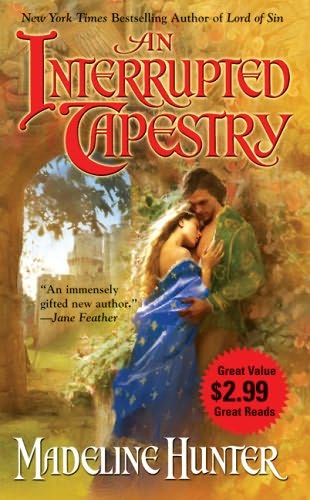


Your covers have amazing graphical effects. What kind of techniques do you use?
As I indicated earlier, photography plays a big role in my work. But in my mind, the image is always a painting. First, the basics. The models, no matter how handsome or beautiful they are, or how fine actors they are, never look as good, or get the pose just right, as they need to on covers. We’re dealing with fantasy and images have to go beyond ‘real’ to communicate emotion. So in Photoshop, I cut here, pinch there, puff this up, flatten that down, and add a lot of hair. Men and women on romance covers have a lot of hair! Working to get all the parts in the illustration to work well together, making sure that the space is believable, the lighting works, the composition flows and keeps the eye moving, I try to get the image to be as beautiful as possible. Only when It’s at that stage do I start to “play” with the image. It’s a variation of what I did as a kid, colouring with crayons. I try this and that, always watching to see if I like the effect. The computer is so good at allowing this kind of experimentation. You do it on layers, so you can turn each idea on or off. Sometimes I’ll have 35 layers going, each one with something different that I tried. This is the stage I like the best, because it is where the piece comes to life. At all stages in the illustration, I ask myself, does it communicate the feeling I want? Should the illustration be full of light? Or is it a darker, smokier kind of romance? Does this image keep the “look” going for that certain author? Is it different enough? It’s not really the way that sounds, with all those questions. It’s more of an intuitive consciousness that keeps those elements in mind. One thing I’d like to add; My effects come out of the art history I carry around inside, along with the crazy modern culture we live in. I have been very influenced by the great Italian art of Caravaggio, Botticelli and Tintoretto and so many others, especially after seeing their work in person.
Le tue cover hanno incredibili effetti grafici. Che tipo di tecniche usi?
Come accennavo prima, la fotografia gioca sempre un ruolo importante nel mio lavoro. Ma, nella mia mente, l’immagine è sempre un dipinto. Per prima cosa, le basi. I modelli, non importa quanto siano belli ed affascinanti, o quanto siano bravi come attori, non hanno mai l’aspetto che dovrebbero avere sulle copertine, o la posa esatta. Il nostro è un lavoro di fantasia, e le immagini devono andare oltre la ‘realtà’ per trasmettere emozioni. Così con Photoshop io taglio qui, stringo là, qui gonfio un po’, là appiattisco, ed aggiungo un sacco di capelli. Gli uomini e le donne sulle copertine dei romance hanno tantissimi capelli! Mentre mi dò da fare perchè tutte le parti dell’illustrazione stiano bene insieme, mi assicuro che lo spazio sia credibile, l’illuminazione funzioni, la composizione sia fluida e tenga l’occhio in movimento, cerco di far sì che l’mmagine sia la più bella possibile. Solo quando sono arrivato a questo punto inizio a “giocare” con l’immagine. E’ una variazione di quello che facevo da bambino, quando coloravo con i pastelli. Provo questo e quello, e sto sempre attento a vedere se mi piace l’effetto. Il computer funziona davvero bene nel permettere questo tipo di sperimentazione. La si fa a strati ( layer ), così ogni idea può essere aggiunta oppure tolta. A volte lavoro perfino con 35 layer, in ognuno dei quali ho messo qualcosa di differente. Questo è il momento che mi piace di più, perché è lì che il lavoro prende vita. In tutti I momenti della creazione di un’illustrazione, io mi chiedo, comunica l’emozione che voglio? L’illustrazione deve essere piena di luce? Oppure è un tipo di romance più dark, più torbido? L’immagine mantiene il “look” tipico di quell’autore? E’ abbastanza diversa dalle altre? Non è così che funziona, in realtà, non mi pongo tutte queste domande. E’ più che altro una consapevolezza intuitiva, che mi fa tenere in mente tutte queste cose allo stesso tempo. Vorrei aggiungere una cosa: i miei effetti vengono dalla storia dell’arte che io mi porto dentro, oltre che dalla folle culura moderna in cui viviamo. Sono stato molto influenzato dalla grande arte italiana di Caravaggio, Botticelli e Tintoretto e di tantissimi altri, specialmente dopo aver visto le loro opere di persona.




What makes a perfect cover?
Well, never having done a perfect cover, I can only talk about My best efforts. If the cover pleases me, the colours working well together, the composition moving nicely, the people seeming graceful and managing to get across the mood I’m after, then I’ll like it. It has a bunch of other critics to pass through; the art director, the editors, the author and even sometimes, the large bookstores weigh in on my covers. If it manages to get by all those people without being changed beyond recognition, there is one last and most important critic it has to pass, the public. They have to pick up the book and like it enough to carry it to the cash register. So if I manage to do a cover that pleases me and all those people and sells really well, that’s as close to perfect as I get. Well, maybe if it wins an award!
Cosa ci vuole per fare una cover perfetta?
Be’, non avendo mai fatto una copertina perfetta, posso solo parlare dei miei sforzi meglio riusciti. Se la copertina mi piace, i colori stanno bene insieme, la composizione fluisce bene, le persone sembrano aggraziate e riescono a ricreare lo stato d’animo che sto cercando, allora mi piace. Ci sono un mucchio di altri critici attraverso cui deve passare; il direttore artistico, gli editori, l’autore e, a volte, perfino le grandi librerie hanno voce in capitolo sule mie copertine. Se riesce a passare attraverso tutte queste persone senza venire stravolta, c’è un ultimo critico che deve passare, il più importante: il pubblico. Le persone devono prendere il libro in mano e gli deve piacere quanto basta per portarlo alla cassa. Così, se riesco a fare una copertina che piace a me e a tutte queste persone, e che si vende molto bene,è la cosa più vicina alla perfezione che posso ottenere. Be’, magari, se vince anche un premio…!
Have you a favourite cover?
I do have some favorites. The Devilish Duke In My Bed, Her Ladyship’s Companion, My wicked Marquess, Scandal’s Daughter, Virgin Secret. When the Duke Returns, With Seduction In Mind, Runaway McBride, the Tory Widow, The Flame and The Shadow.
Hai una cover preferita?
Ne ho alcune. The Devilish Duke In My Bed, Her Ladyship’s Companion, My wicked Marquess, Scandal’s Daughter, Virgin Secret. When the Duke Returns, With Seduction In Mind, Runaway McBride, the Tory Widow, The Flame and The Shadow.


Talking about the “concrete side” of your job. Editor and illustrator ... an easy or complicated mix?
I actually don’t have a lot of direct contact with the editors, the art director being the one who I work for. But I do get a lot of indirect influence from them. Art directors have their preferences and dislikes, but they are mainly visual. The editors, on the other hand are not thinking visually at all. They’re more concerned with the content and details in the cover illustration. Sometimes I don’t understand their changes at all. Sometimes I have to work very hard to not let them destroy the image with their alterations. But , for the most part, they appreciate what I do and are happy when the author likes the cover.
Veniamo al lato pratico del tuo lavoro. Editore e illustratore ... un rapporto facile o complicato?
A dir la verità non ho molti contatti diretti con gli editori; la persona con cui lavoro è il direttore artistico. Ma mi influenzano molto, indirettamente. I direttori artistici hanno le loro preferenze e le loro antipatie, ma hanno un approccio visivo. Gli editori, da parte loro, non ragionano affatto in modo visivo. Sono più preoccupati del contenuto e dei dettagli dell’illustrazione di copertina. A volte non capisco affatto I loro cambiamenti. A volte, devo faticare parecchio perché le loro modifiche non distruggano l’immagine. Ma, per la maggior parte, apprezzano quello che faccio e sono contenti quando all’autore la cover piace.
Some publishers don’t indicate the name of the cover illustrator. What do you think about that?
It’s an ongoing issue for us illustrators. We should be acknowledged. I know that in the future people are going to want to know who did which cover. I recently visited a library in California, where they were carefully cataloguing a huge collection of Science Fiction and Fantasy books. They were trying to find out which artist did the covers and were having a very hard time. And when you think about it, our covers help sell the books in a big way, so, they should spare a little line of type somewhere that states the artist’s name.
Alcune case editrici non indicano il nome dell'illustratore che ha creato la copertina. Che ne pensi?
Per noi illustratori questo è un problema aperto. Dovremmo avere un maggior riconoscimento. Penso che in futuro la gente vorrà sapere chi è l’autore di una determinata copertina. Recentemente ho visitato una biblioteca in California, dove stavano catalogando con grande cura un’enorme collezione di libri di fantascienza e di fantasy. Stavano cercando di scoprire quali artisti avevano realizzato le copertine, e avevano delle grosse difficoltà. Eppure, se ci pensi, le nostre copertine aiutano parecchio a far vendere i libri, quindi, potrebbero trovare lo spazio per mettere da qualche parte una riga che dica qual è il nome dell’artista.
How long do your illustrations take to create and how much do you charge?
I can’t really talk about the fees I’m paid for legal reasons. I make a good living, though it is hard work. At any time I have maybe 10 projects going in various stages of completion. The publishers can give me as much as two months or as little as a few days, in an emergency, to do a cover. Generally, it takes about a week after I get the photos to finish a cover, depending on complexity and how fussy the art director and editor is.
Quanto tempo ti ci vuole per creare le tue illustrazioni, e quanto le fai pagare?
Non posso parlare dei compensi che ricevo, per ragioni legali. Ci vivo bene, anche se è un lavoro duro. In genere posso avere anche 10 progetti in corso, a vari stadi di completamento. Per realizzare una cover le case editrici mi possono dare due mesi, oppure anche solo pochi giorni, in caso d’emergenza. In genere, per terminare una cover mi ci vuole una settimana a partire da quando ricevo le foto, a seconda della complessità e di quanto sono difficili da accontentare il direttore artistico e l’editore.
Advantages and disadvantages of being an illustrator ...
One of the things I like best about my profession is working with the different people involved in the process, the photographer, models, costumer, art directors and my excellent agent, Peter Lott. I also enjoy the email conversations I have with authors and readers all over the world. I love telling stories through art, that communication being a big part of illustration. Sometimes the pace of work becomes too fast, and I don’t have enough time for family and fun. When it gets that way, I also have no time to do my gallery paintings. I can get overworked and grumpy. Still, it is better than being unemployed!
I vantaggi e gli svantaggi di essere un illustratore ...
Una delle cose che mi piacciono di più nella mia professione è il fatto di lavorare con le varie persone coinvolte dal processo, cioè il fotografo, i modelli, il costumista, i direttori artistici e il mio ottimo agente, Peter Lott. Mi diverto anche ad avere scambi di email con autori e lettori di tutto il mondo. Mi piace servirmi della mia arte per raccontare delle storie, e questo tipo di comunicazione è una parte importante dell’illustrazione. A volte il ritmo del lavoro si fa troppo frenetico, e io non ho tempo sufficiente per la famiglia e per lo svago. Quando si arriva a quel punto, non ho nemmeno più tempo per i dipinti della mia galleria. Posso diventare molto stressato e irritabile. Comunque, meglio così che essere senza lavoro!
So you’re a “360° artist”! I know you've won many awards for your illustrations. Which was that most important for you?
This may seem strange, but I don’t have a list of awards I’ve won. They are there somewhere, buried in files and papers, and I should get them all organized someday… The most recent award I received just last week from The Romance Writers of Australia. Best Cover for a long novel in 2008! That was for The Flame & The Shadow, by Denise Rossetti.


Un'artista a 360° dunque! So che hai vinto molti premi per le tue illustrazioni. Qual è stato il premio più importante, per te?
Può sembrare strano, ma non ho un elenco dei premi che ho vinto. Sono lì da qualche parte, sepolti tra i files e le carte, e qualche giorno dovrei decidermi a mettere a posto tutto quanto… Il premio più recente che ho ricevuto è stato giusto la settimana scorsa, da parte dell’associazione The Romance Writers of Australia. La Miglior Copertina di romanzo per il 2008! E’ stato per The Flame & The Shadow, di Denise Rossetti.
In addition to book covers, what other kinds of illustrations do you do?
I have done a lot of work for Bradford Exchange collectibles, (items made of Porcelain and printed with my images). Princess Diane, The Titanic, things like that. I also have done a few childrens’ books, most recently The Legend Of The Christmas Stocking. I plan on doing more kid’s books. I am continuing with my project , The Forces Of Nature, for which I am the client, art director and artist! It’s taking a long time, but is a very interesting project. The most recent image from that series is Fall.
Oltre alle copertine per i libri, che altri tipi di illustrazioni fai?
Ho fatto moltissimi lavori per le collezioni di Bradford Exchange, (oggetti fatti in porcellana, con le mie immagini stampate). La Principessa Diana, il Titanic, cose così. Ho fatto anche alcuni libri per bambini, il più recente è stato The Legend Of The Christmas Stocking. Ho in progetto di fare altri libri per l’infanzia. Sto continuando il mio progetto, le Forze della Natura, in cui io sono il cliente, il direttore artistico e l’artista! Mi sta prendendo parecchio tempo, ma è un progetto molto interessante. L’immagine più recente che ho realizzato per questa serie è Autunno (Fall).

Closing this interview (as I can’t keep you infinity) we would like to know some last curiosities. Have you ever read one of the novels that have your covers?
Oh yes. I used to have to read whole manuscripts, then I would use the pages for scrap paper. Many times people would look at the other side of my notes and find themselves in the midst of a torrid love scene! I generally don’t read the books much, just an excerpt here and there, but I loved Denise Rossetti’s The Flame & The Shadow. I love good writing. One very dark and romantic novel I’ve read recently is The Shadow Of The Wind, by Carlos Ruiz Zafon.
Per concludere (visto che suppongo di non poterti intrattenere all’infinito) vorrei che ci togliessi qualche ultima curiosità! Hai mai letto uno dei romanzi di cui hai realizzato la copertina?
Oh, sì. Avevo l’abitudine di leggere manoscritti interi, poi usavo le loro pagine per i miei appunti. Molte volte la gente guardava l’altra facciata delle mie note e si ritrovava nel bel mezzo di una scena d’amore bollente! In generale non leggo molti libri, giusto qualche stralcio qua e là, ma mi è piaciuto The Flame & The Shadow di Denise Rossetti. Amo i libri scritti bene. Un romanzo molto dark e romantico che ho letto recentemente è The Shadow Of The Wind, di Carlos Ruiz Zafon.
Can you describe your relationship with authors?
I have met a few of them in person and many of them online and I always feel a kinship with them. We’re in this together! And we are helping each other as well. I have come to realize over the years how important a good cover is to the author, particularly when they are jus starting out. A good cover can help their career along tremendously, while a bad one can almost kill it! So I treat each project with great respect, knowing how hard it is to write a good book and just how much is riding on the cover illustration.
Ci puoi descrivere il tuo rapporto con gli scrittori?
Ne ho conosciuti alcuni di persona, molti online, e mi sento sempre molto vicino a loro. Noi siamo nella stesa barca! E ci aiutiamo a vicenda. Nel corso degli anni mi sono reso conto di quanto sia importante una buona copertina per un autore, in particolare se è agli inizi. Una buona cover può aiutare incredibilmente la loro carriera, ma una mal riuscita la può stroncare! Così tratto ogni progetto con grande rispetto, sapendo quant’è difficile scrivere un buon libro e quanto conta l’illustrazione di copertina.
If you were not an illustrator….. Today James Griffin would be ...
A beach bum! No, some kind of artist. I might have gone totally the gallery direction. The truth is, even when I’m travelling and experiencing the wonders of other countries, I begin to long for my studio and paints. Maybe it’s my way of processing the world I see. But at this point, it’s just what I do.
Se non fossi un illustratore ... .. Oggi, James Griffin sarebbe ...
Sarei un fannullone in spiaggia tutto il giorno! No, sarei un artista di qualche tipo. Avrei poturo indirizzarmi completamente verso l’attività di galleria. La verità è che, anche mentre sto viaggiando e imparo a conoscere le meraviglie di altri paesi, inizio a sentire la mancanza del mio studio e dei miei colori. Forse è il mio modo di rielaborare il mondo che vedo. Ma, a questo punto, sono fatto così.
I want to thank you Veronica, for giving me this interview. You are a real authority on romance books and it’s an honor to have this opportunity. Thank you all.
Voglio ringraziare Veronica, per avermi concesso questa intervista. Sei un vera e propria autorità in fatto di romanzi d'amore ed è un onore per me aver avuto questa opportunità. Grazie a tutte voi.
Ok, the interview is over, but if you want to keep dreaming with James Griffin you can do it here:
http://paintlayers.blogspot.com/
www.veronicabennet.altervista.org/jamesgriffin.html
L’intervista è finita ma se volete continuare a sognare con James Griffin potete farlo qui:
http://paintlayers.blogspot.com/
www.veronicabennet.altervista.org/jamesgriffin.html





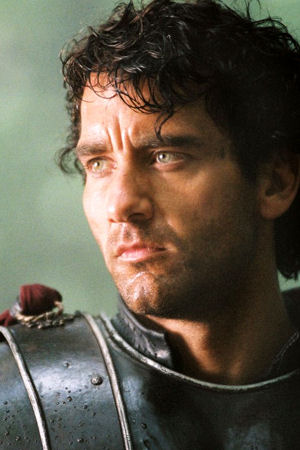
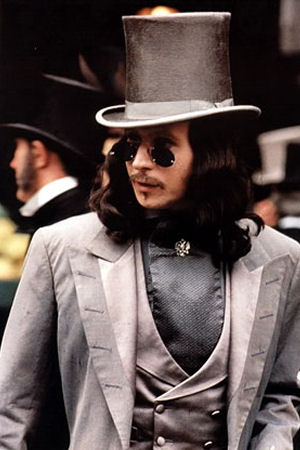
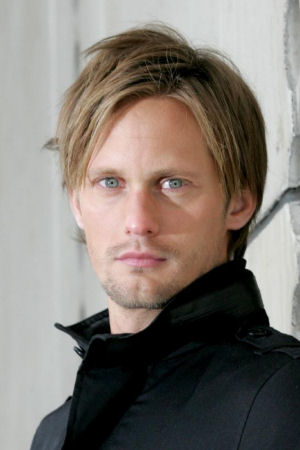
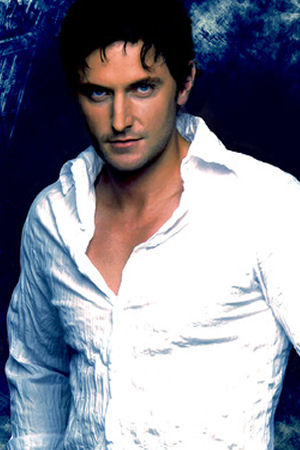
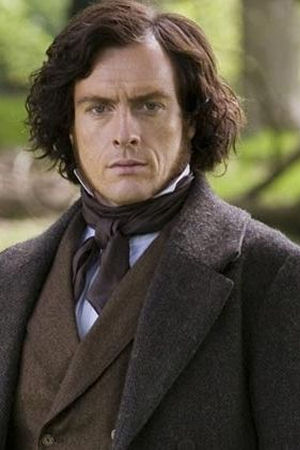
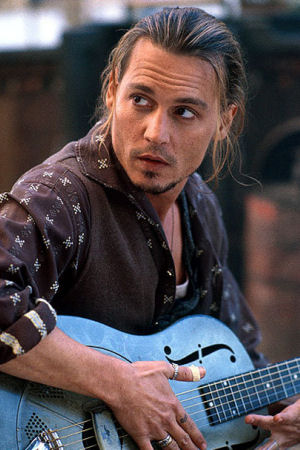
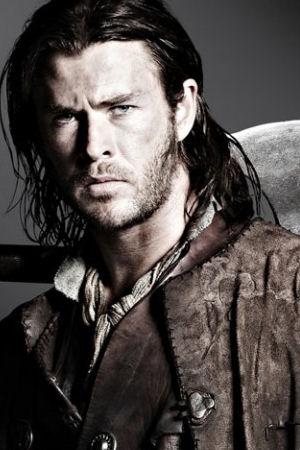
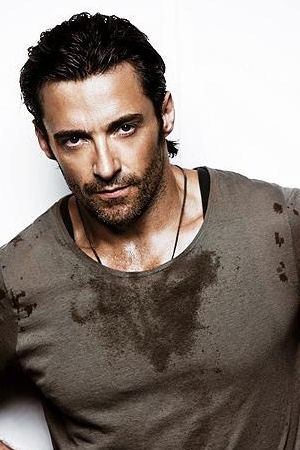
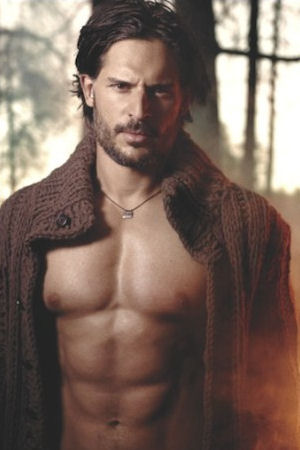
Io ringrazio Veronica per la
Io ringrazio Veronica per la splendida sorpresa e James Griffin per questa splendida intervista.
Chi non lo conosce, o meglio, chi non conosce il suo meraviglioso lavoro?! Io sono di parte, molto spesso è la copertina a catturare la mia attenzione... sarà anche per il fatto che adoro la grafica, ma rimango completamente affascinata davanti ad una buona copertina che racchiuda l'essenza del libro.
Deve essere stupendo poter stare su un set e vedere realizzata, passo dopo passo, la creazione o l'immagine della tua mente. Una cosa super emozionante. Quasi ti invidio! :)
La cosa che mi piace di più nei tuoi lavori sono i colori, adoro i colori in una copertina di un romance storico.. .si vede tantissimo l'influenza della pop art.
La mia domanda è questa, quanto tempo è trascorso prima che il tuo lavoro fosse ricompensato nella maniera giusta? Qual è stato il momento in cui hai detto, nella tua carriera, è fatta... sono un artista e finalmente la gente se n'è accorta?
Hai girato tantissimo e hai detto che hai visto di persona moltissimi dipinti, anche di pittori italiani. Mi chiedo, sei mai venuto in Italia per studio?
Hai già presentato una tua mostra? Hai in programma di fare un giro (magari mondiale) con la collezione delle tue copertine? Te lo hanno mai proposto?
Un saluto e grazie ancora per la disponibilità.
Silvietta
Avevo già visto alcuni lavori
Avevo già visto alcuni lavori di James Griffin e mi sono sempre piaciuti molto. Tra l'altro sono convinta che il lavoro di un illustratore sia molto importante per la vendita di un libro. Io spesso mi lascio influenzare dalla copertina, quando decido di acquistare un romanzo. E' ovvio che anche la trama deve conquistarmi, però è la copertina che mi attira prima di tutto. Immagino che per svolgere bene questo lavoro ci voglia una buona dose di fantasia. Non credo basti informarsi sugli abiti portati in un determinato periodo storico o su come viene descritto il personaggio dall'autrice del libro. Trovare la posa giusta, il giusto sfondo non deve essere facile. Quindi faccio i miei complimenti a James per la sua bravura e ringrazio te, Veronica, per questa bellissima intervista.